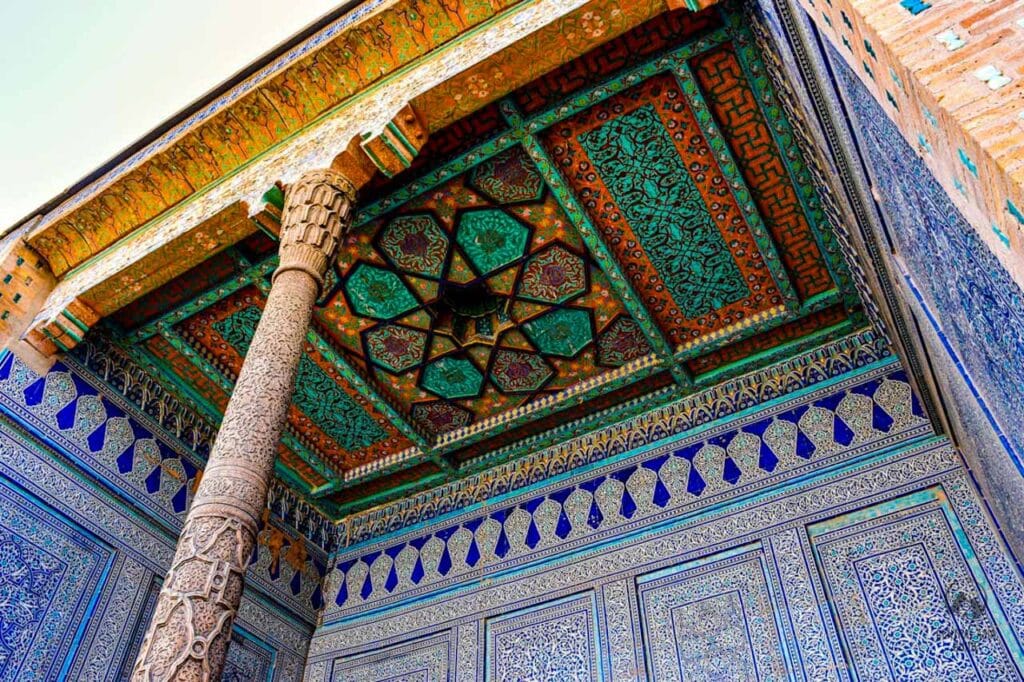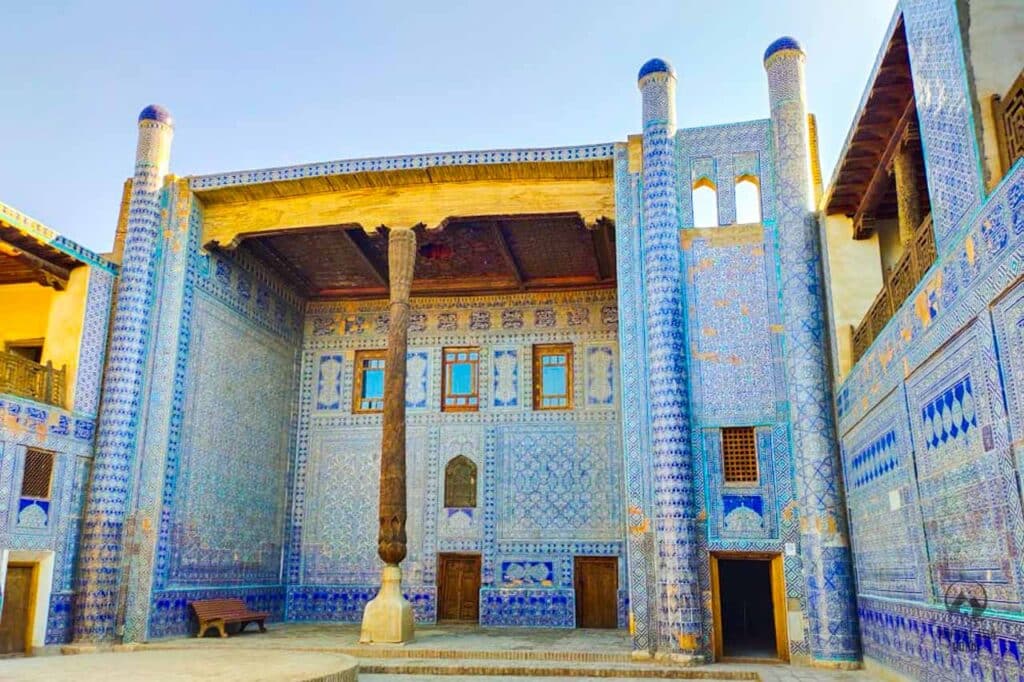Tach Khaouli Palace
Tash Khauli Palace
Since ancient times, it has been essential for rulers of the East to build giant palaces, not only as residences and places for meetings with guests, but as symbols of power and prestige. The Khorezm is an example of how the palaces were the hubs of governance, where the khan and his family resided and where crucial state matters were handled.
History of Toshhovli Palace
One of the most important periods in the history of the Khiva Khanate came during the rule of Allakuli Khan (1825-1842). His reign happened during the golden era for Khorezm, with notable advancements in the economy, politics, and culture. The prosperity brought about by trade, particularly with the Russian Empire, significantly enriched the region.
Tash-Hauli, meaning “Stone Courtyard,” is a palace built between 1830 and 1838 in the eastern part of Ichan Kala. The palace became the political, administrative, and trade hab of Khiva, reflecting the opulence and authority of the Khivan khans.


Tash-Hauli Architecture
The Tash-Hauli Palace, built under the command of Allakuli Khan, stands as a testament not only to the power of the Khivan khans but also to the exceptional craftsmanship of Khorezmian architects. The palace’s construction, however, was fraught with tragedy. Due to Allakuli Khan’s demand for rapid completion, several master builders who deemed the task impossible within such a tight timeframe were executed. Despite these challenges, the palace was completed in 8 years, becoming a symbol of resilience and architectural excellence.
Tash-Hauli’s design resembles a fortified structure, with high battlements, towers, and fortified gates. Its architectural style is inspired by traditional Khorezmian homes and country villas, featuring elegant courtyards, shaded columned aivans, and loggias.
The palace is divided into three main sections, arranged around inner courtyards. The northern part housed the Khan’s harem, while the formal reception room, known as Ishrat-Haul, adjoins the southeast.
The southwest section contained the court office. The heart of Ishrat-Hauli was a round stage that accommodated the Khan’s yurt, an essential element of the royal lifestyle. Long, winding corridors and rooms connected the various parts of the palace, making it both awe-inspiring and mysterious.
The Tash-Hauli Palace is one of the most well-preserved structures in Khiva, retaining much of its original grandeur. The unique and intricate designs crafted by Master Abdullah, often referred to as the “Genius” by locals, continue to captivate visitors.
Among the many fascinating stories surrounding the palace is the legend of a Russian stove-maker who, upon being commissioned to build a fireplace for the Khan, left behind a beautifully crafted carriage as a gift to the Khan’s harem. The carriage remains on display, serving as a symbol of the cultural exchange between Russia and Khorezm.
Today, Tash-Hauli Palace stands as a remarkable example of Khorezmian architecture and history, offering insight into the legacy of Allakuli Khan and the Khiva Khanate.

Other Sights in Khiva
Page updated 8.5.2025